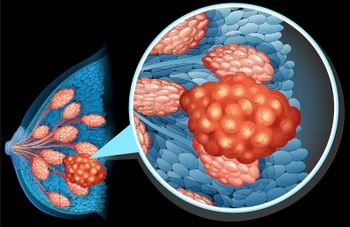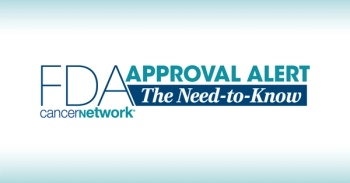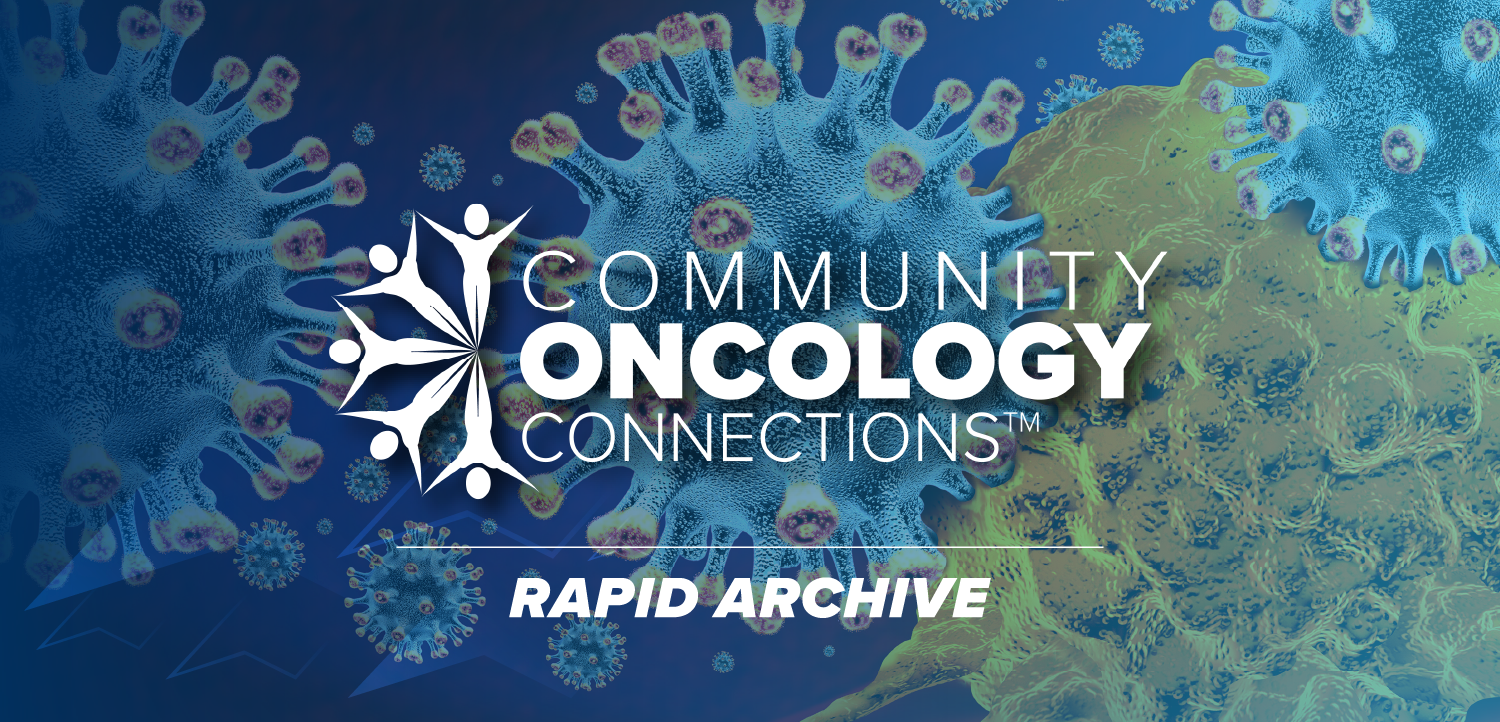
Novel Cancer Vaccine Combo Therapy Numerically Improves PFS in Melanoma
The novel cancer vaccine plus pembrolizumab missed statistical significance but generated a clinically meaningful improvement in advanced melanoma.
Adjuvanted imsapepimut and etimupepimut (Cylembio) in combination with pembrolizumab (Keytruda) did not achieve statistical significance with the primary end point of progression-free survival (PFS) vs pembrolizumab alone in patients with unresectable or metastatic melanoma in top-line results from the phase 3 IOB-013/KN-D18 trial (NCT05155254), according to a press release from the developer, IO Biotech.1
It was reported that though the treatment did not demonstrate statistical significance, it did yield a clinically meaningful improvement in PFS. The early and sustained separation of the PFS curves showed an improvement with the combination (HR, 0.77; 95% CI, 0.58-1.00; P = .056); the noted threshold for significance was P < .045.
In an intent-to-treat analysis, the combination treatment elicited a median PFS of 19.4 months compared with 11.0 months with pembrolizumab alone. A trend toward improvement regarding overall survival (OS) was observed (HR, 0.79; 95% CI, 0.51-1.10); the data were not fully mature, though the developer expects OS to mature over the next 6 to 9 months.
The improvement to PFS was noted across all subgroups. A profound effect was observed in patients with PD-L1–negative tumors, with a median PFS of 16.6 months with the combination and 3.0 months with the monotherapy (HR, 0.54; 95% CI, 0.35-0.85; P = .006). A post hoc analysis showed that those without prior anti–PD-1 treatment demonstrated a median PFS of 24.8 months and 11.0 months, respectively (HR, 0.74; 95% CI, 0.56-0.98; P = .37).
It was reported that more detailed results will be shared at an upcoming medical conference. The developer plans to meet with the FDA in fall 2025 to discuss the data and the next steps for submitting a biologics license application for the treatment in advanced melanoma.
“In this study, patients treated with [adjuvanted imsapepimut and etimupepimut] in combination with pembrolizumab have achieved the longest median PFS ever observed in a phase 3 clinical study in advanced melanoma, and in the PD-L1–negative population, patients achieved a remarkable 16.6 months of median PFS compared with 3.0 months in patients treated with pembrolizumab alone,” stated Omid Hamid, MD, director of clinical research and immunotherapy at The Angeles Clinic and Research Institute, a Cedars-Sinai affiliate, in the press release.1 “The significant benefit seen across patients with poor prognostic factors, including patients who are PD-L1 negative, cannot be overlooked. Given the notable safety profile and the strong clinical effect observed with [adjuvanted imsapepimut and etimupepimut] as well as the unmet need in [patients with] advanced melanoma, [adjuvanted imsapepimut and etimupepimut], if approved, has the potential to become a new standard of care for patients with advanced melanoma.”
IOB-013/KN-D18 is a randomized, open-label trial that enrolled a total of 407 patients who were randomly assigned to receive either adjuvanted imsapepimut and etimupepimut with pembrolizumab (n = 203) or pembrolizumab alone (n = 204). Treatment consisted of subcutaneous adjuvanted imasapepimut and etimupepimut at 85 µg every 3 weeks for up to 35 cycles, with additional doses given on day 8 of cycles 1 and 2 and intravenous pembrolizumab at 200 mg every 3 weeks for up to 35 cycles. In the monotherapy group, the pembrolizumab dosage was the same.2
Eligible patients were diagnosed with histologically or cytologically confirmed stage III or IV melanoma and were treatment naive, having not received previous systemic anticancer therapy for unresectable or metastatic melanoma. Patients also had at least 1 measurable lesion per RECIST v1.1 and provision of archival or newly acquired biopsy tissue not previously irradiated.
Trial exclusion criteria included known or suspected central nervous system metastases, receipt of prior radiotherapy within 2 weeks of start of trial treatment, and BRAF V600–positive disease that experienced rapid progression and/or receipt of standard first-line therapy with BRAF or MEK inhibitors.
The primary end point of the trial was PFS. Secondary end points included overall response rate, OS, durable objective response rate, complete response rate, duration of response, time to complete response, disease control rate, and incidence of adverse events.
No new safety signals were observed with the therapy, and the combination was well tolerated. The most reported adverse effects were infusion site reactions, which were resolved on treatment; 56% of patients who received the combination reported an event.
“Since reporting the positive outcome of our phase 1/2 study [MM1636; NCT03047928) in a similar patient population, we have been eagerly awaiting these results supporting the activity of [adjuvanted imsapepimut and etimupepimut] combined with an anti–PD-1 in patients with advanced melanoma,” said Inge Marie Svane, MD, PhD, professor and director of the National Center for Cancer Immune Therapy at Copenhagen University Herlev Hospital and principal investigator in the phase 3 trial, in the release.1 “These data provide evidence that a therapeutic cancer vaccine can improve PFS in patients with metastatic disease.”
References
- IO Biotech announces clinical improvement in progression free survival demonstrated in pivotal phase 3 trial of Cylembio plus KEYTRUDA (pembrolizumab) for the treatment of first-line advanced melanoma, but statistical significance narrowly missed. News release. IO Biotech. August 11, 2025. Accessed August 11, 2025. https://tinyurl.com/y7k29pub
- IO102-IO103 in combination with pembrolizumab versus pembrolizumab alone in advanced melanoma (IOB-013 / KN-D18). ClinicalTrials.gov. Updated January 9, 2024. Accessed August 11, 2025. https://tinyurl.com/umnaztt8
Newsletter
Stay up to date on recent advances in the multidisciplinary approach to cancer.



















































































